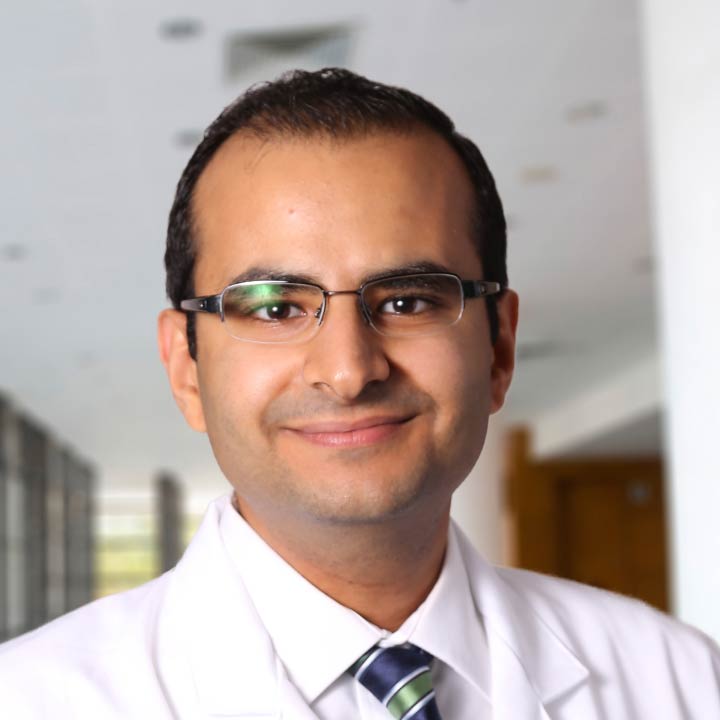
Veins and arteries are like a system of highways that carry blood from the heart and lungs, delivering oxygen and nutrients throughout the body. While arteries are the vessels that take blood to the organs and limbs, the job of the veins is to return that blood to the heart and lungs.
Sometimes portions of veins can become blocked or narrowed, or sometimes people are born without them. When this happens, blood that is supposed to recirculate instead hits a roadblock. This can lead to a number of symptoms, which can reduce one’s quality of life, but can also be life-threatening in certain cases.
Many patients are offered limited treatments options, but there are cutting-edge techniques available at The Ohio State University Wexner Medical Center that can be used to rebuild these veins in some patients to restore circulation and quality of life.
The procedures are done by specially trained interventional radiologists, who operate through small incisions, using X-ray imaging, ultrasound and computerized tomography (CT) to guide flexible wires and tubes and operate inside the body.
What is venous reconstruction?
Venous reconstruction is the process of building or rebuilding veins that are missing or have stopped working or died off due to a blockage or narrowing. This restores blood flow from the blocked area.
Interventional radiologists make small incisions, where we enter the veins with tiny tubes called catheters, and use wires, balloons and other instruments to help recreate the missing vessels.
The vessels themselves are created with metal stents, or pipes, matched to the size of the vessel.
The procedure is often performed under anesthesia. Because we use small incisions, and enter through vessels, the procedure is minimally invasive, and patients generally go home the same or next day. We ask them to be active right away to keep blood flowing.
While some cases are simple, others can be very complex and take several hours to complete. But when they're successful, they make a big difference. Patients might return to employment or activities they had given up because they were disabled or had limited movement.
Not everyone is a candidate for this type of procedure. It depends on the specific situation, including symptoms and the level and location of blockage. But if it’s safe and feasible, we can give them the option.
Why veins might need to be rebuilt
Veins can get blocked for a number of reasons, but a primary reason is a blood clot or deep vein thrombosis (DVT). Common situations that can lead to blocked or damaged veins include:
- sitting or being inactive for long periods
- surgery that damages a vessel
- a catheter or port, such as those used for chemotherapy or dialysis
- a benign or cancerous tumor that narrows a vein
Symptoms of blocked veins
The most common symptom of a blocked vein is swelling of a limb.
Some signs of a vein blocked in the upper body may include arm or facial swelling, headaches, vision changes, ringing in the ears or shortness of breath.
Some signs of a vein blocked in the lower body may include leg swelling, leg redness or discoloration called stasis dermatitis, ulcers or infection.
Traditional treatment options for blocked veins
Most commonly, people with blocked veins are treated with blood thinners. But 50% of people with DVT develop a condition called post thrombotic syndrome, with chronic pain, swelling, discoloration, ulcers and other symptoms that don’t resolve. That’s because blood thinners don’t always bust the existing clot, and if it hasn’t been removed, the vein will scar and eventually disappear. Often, these patients are told nothing can be done and have no effective treatment options at that time.
Most patients are unaware that venous reconstruction is an option because there’s a lack of awareness about this innovative technique, both among the general community and among those in the medical field.
But we often can give them new options. I have developed and grown these services since about five years ago, and have observed great patient outcomes and many life-changing patient experiences for those with venous disease.
Learn more about venous reconstruction
You might be a candidate for venous reconstruction if you’ve been diagnosed with DVT, venous disease or venous occlusive disease. Seek expertise at a place like the Ohio State Wexner Medical Center.

When you give to The Ohio State University Wexner Medical Center, you’re helping improve lives
We’re committed to making advancements in research, education and patient care that will have an impact throughout Ohio and the world.
Ways to Give




